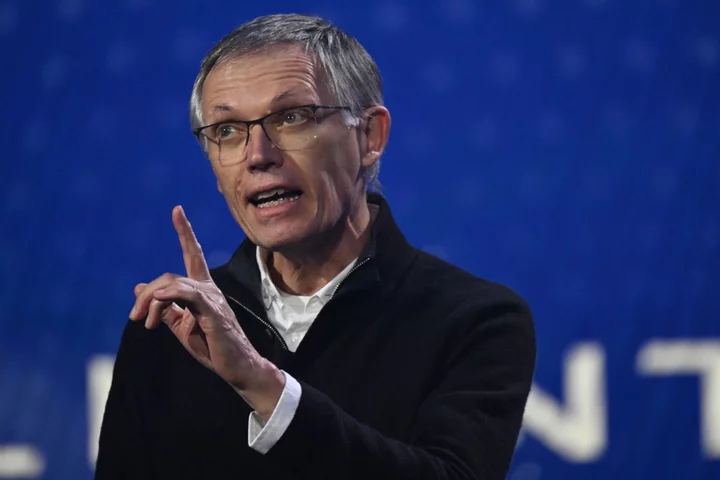In Italy, Stellantis NV is cutting jobs and being accused of skimping on janitorial work. In the US, it’s offering buyouts to scores of staff and has idled a Jeep factory.
In Canada, the carmaker halted construction of a new battery facility, pending more government aid. And in the UK, it’s warned Parliament that post-Brexit trade rules and other issues could doom the country’s EV manufacturing prospects.
All this adds up to an unsubtle trend. Now that Stellantis is less overwhelmed firefighting its way through supply chain crises, CEO Carlos Tavares is returning to his modus operandi of relentlessly cutting costs and hunting for savings.
Tavares demonstrated a knack for this running Peugeot and Citroën maker PSA Group, which combined with Fiat Chrysler in early 2021. With hundreds of thousands of employees and 14 brands with a lot of overlap, particularly in Europe, the Stellantis empire looked ripe for rationalization.
Instead, keeping plants fed with semiconductors and other components took precedence and preoccupied auto executives the world over the last 2 ½ years. With those shortages easing, Stellantis and its peers are now able to crank up their plants again, perhaps even to levels of production that exceed demand at a time when consumers struggle with inflation and rising borrowing costs.
This means the pricing power automakers have enjoyed lately will wane, and unyielding managers like Tavares will have their moment.
The CEO has warned of an influx of cheap Chinese electric vehicles into Europe, and said Stellantis is considering making lower-priced EVs in India in response.
Unions in France and Italy have complained that Stellantis isn’t investing enough in maintaining factories, citing clogged toilets and un-mowed grass. While the company has rejected the accusations, it’s going ahead with plans to eliminate as many as 2,000 positions in Italy this year — some 4.3% of its workforce there — as it retools plants to make electric and plug-in hybrid models.
“The cost of electrification is going to have an impact on the footprint of business that we are going to have around the world,” Tavares said shortly before the job cuts were announced in February.
Stellantis is mulling even more drastic steps in China, where the company hasn’t done well and Western automakers broadly are struggling to maintain market share. After withdrawing from its Jeep-making venture in the country, Tavares suggested Stellantis may cease making cars altogether in the world’s biggest auto market as part of what he’s called an “asset-light” strategy.
In North America, Tavares is making the Canadian government sweat over a $4 billion battery investment with South Korea’s LG Energy Solution. Stellantis said last week that it stopped construction of the EV battery plant in Windsor, Ontario, as it presses authorities for more subsidies.
Days later, Ontario’s Premier Doug Ford promised that Stellantis will get more money, though he declined to say how much. Tavares is bound to drive a hard bargain after Volkswagen AG secured a roughly $10 billion aid pledge for its planned battery plant in the country.
In the US, Stellantis is offering buyouts to 31,000 hourly and 2,500 salaried employees as part of a push to reduce overhead. In February, the carmaker idled its Jeep plant in Belvidere, Illinois, laying off about 1,350 workers indefinitely. The cuts come as the company prepares to negotiate a new four-year contract with the United Auto Workers union.
Stellantis’s efficiency drive may remind some industry observers of how Carlos Ghosn — nicknamed “Le Cost Killer” — turned around Renault SA and Nissan Motor Co. by carrying out painful restructurings.
The similarities aren’t coincidental. A decade ago at Renault, Ghosn had an ambitious right-hand man whose goal was to lead a carmaker of his own someday.
His name: Carlos Tavares.

